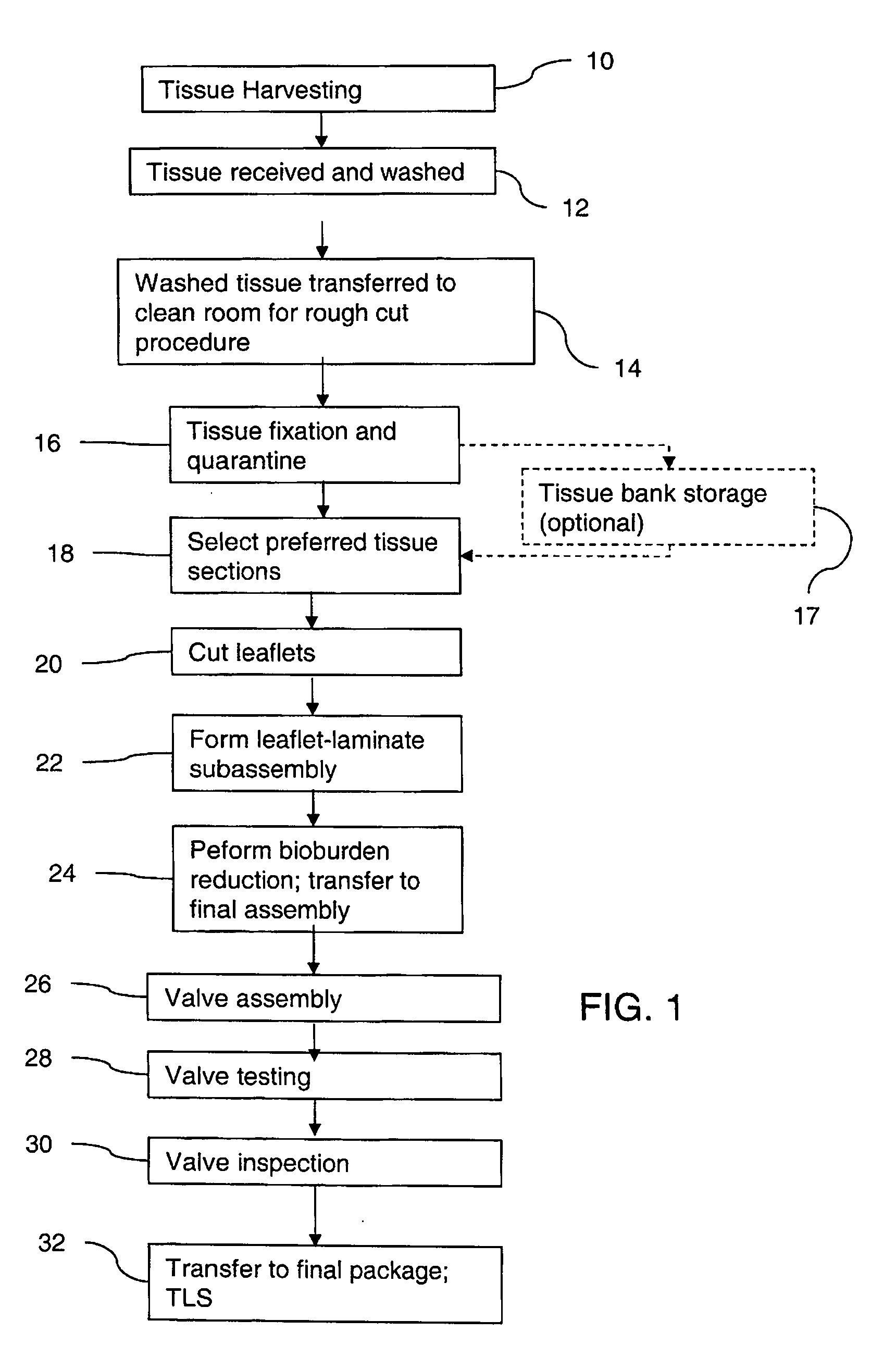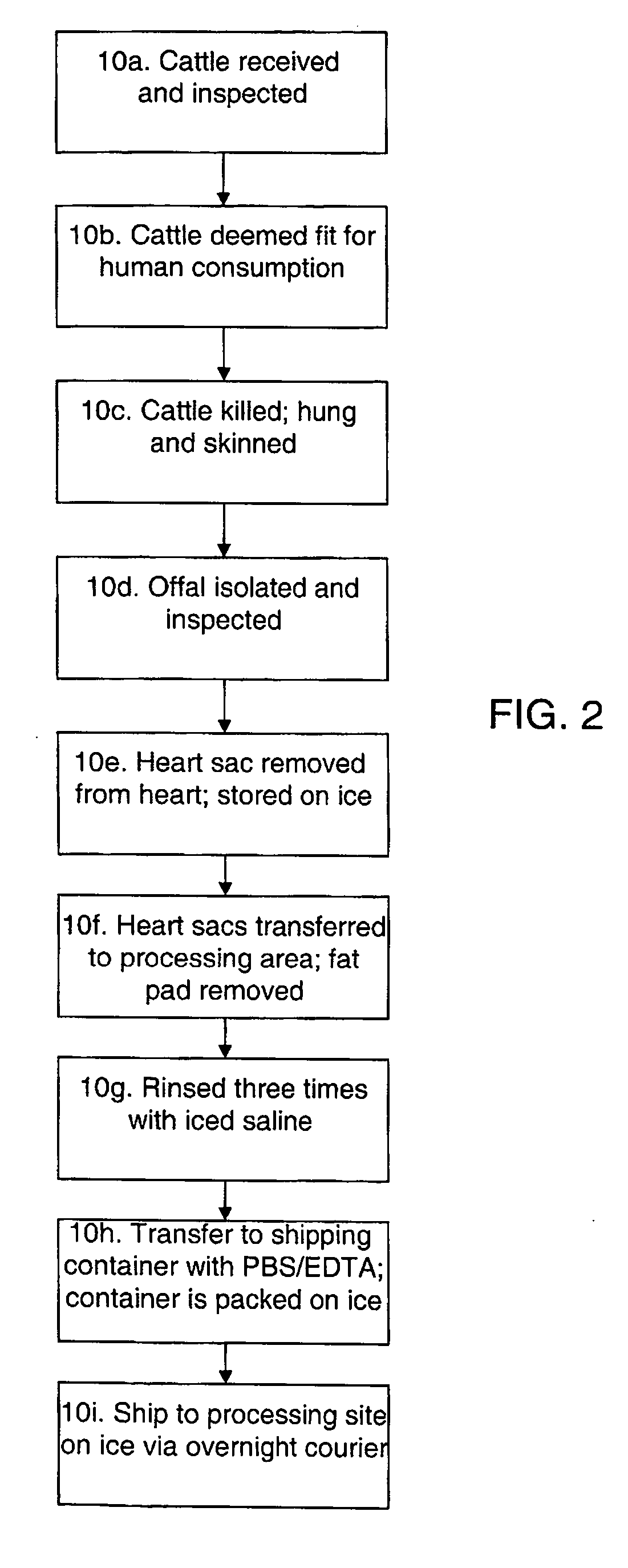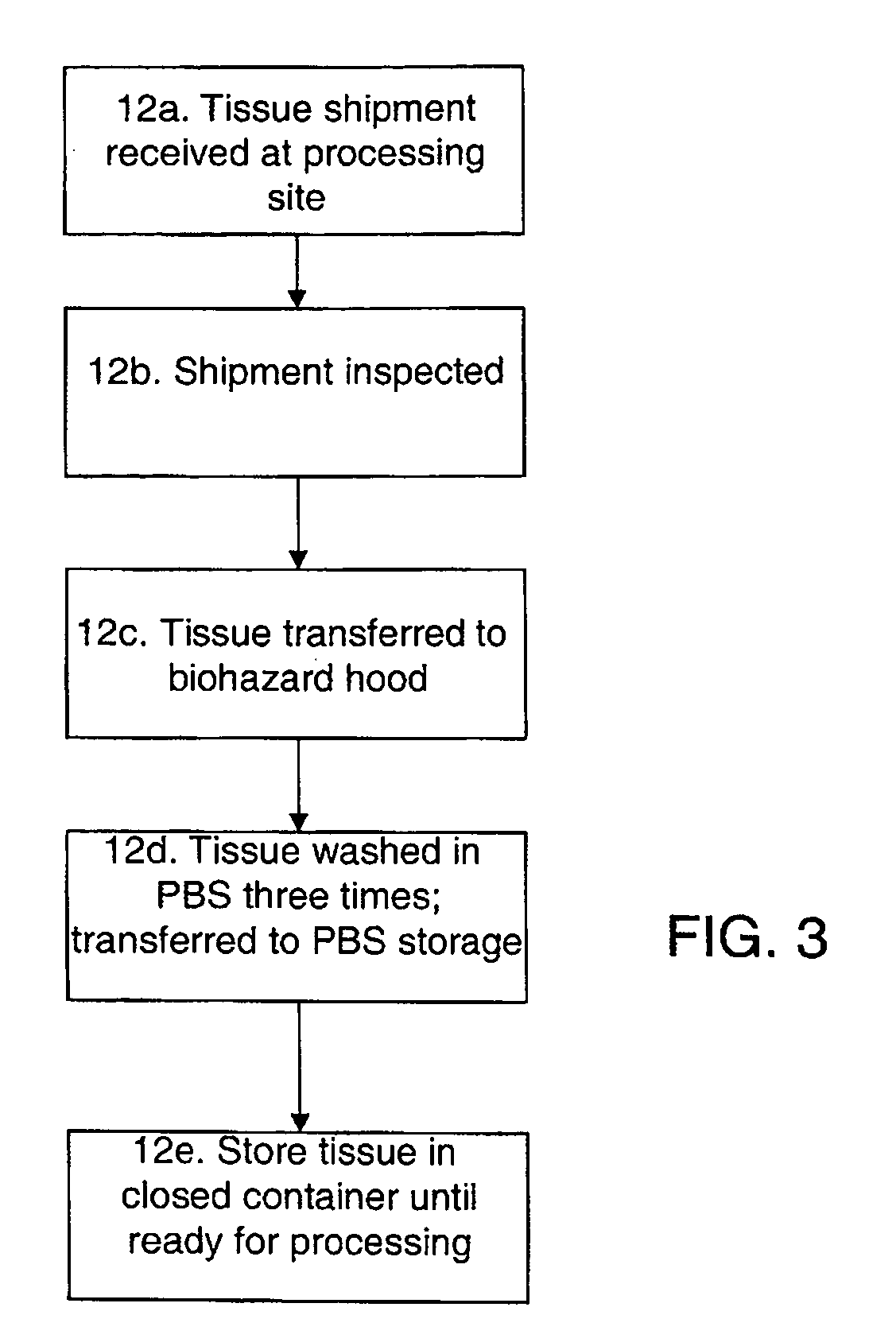Methods for processing biological tissue
a biological tissue and processing technology, applied in the field of biological prostheses, can solve the problems of inability to fully absorb inhibit the enzymatic degradation of the tissue matrix, and inhibit the growth of microorganisms, etc., to achieve the effect of removing background levels of calcium, suppressing or inhibiting microorganism activity and growth, and preventing enzymatic degradation
- Summary
- Abstract
- Description
- Claims
- Application Information
AI Technical Summary
Benefits of technology
Problems solved by technology
Method used
Image
Examples
example 1
[0066] Bovine pericardium tissue samples were subject to the processing steps described in detail herein. In addition, control samples (“glut only”) were subject to the same processing steps with the exception of the bioburden reduction process and terminal sterilization process. For the control samples, the tissue samples were incubated at 32° C. with a 0.57% glutaraldehyde solution.
[0067] Samples of bovine pericardium were obtained and stored in a tissue procurement solution (PBS / EDTA solution) prior to arrival. Initial tissue samples were first rinsed in PBS and fat deposits were removed. The tissue samples were then subject to either uniaxial fixation or isometric fixation. For uniaxial fixation, the tissue was cut into 60×160 cm rectangular strips. One end of the tissue (upper end having a width of 60 cm) was secured to a dialysis clip. A stainless steel rod (weighing about 35-40 g) was placed on the opposing lower end of the tissue strip. The tissue was folded over the rod an...
PUM
 Login to View More
Login to View More Abstract
Description
Claims
Application Information
 Login to View More
Login to View More - R&D
- Intellectual Property
- Life Sciences
- Materials
- Tech Scout
- Unparalleled Data Quality
- Higher Quality Content
- 60% Fewer Hallucinations
Browse by: Latest US Patents, China's latest patents, Technical Efficacy Thesaurus, Application Domain, Technology Topic, Popular Technical Reports.
© 2025 PatSnap. All rights reserved.Legal|Privacy policy|Modern Slavery Act Transparency Statement|Sitemap|About US| Contact US: help@patsnap.com



